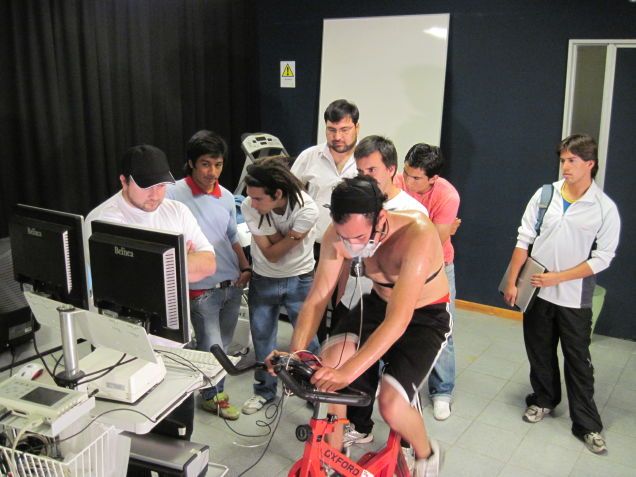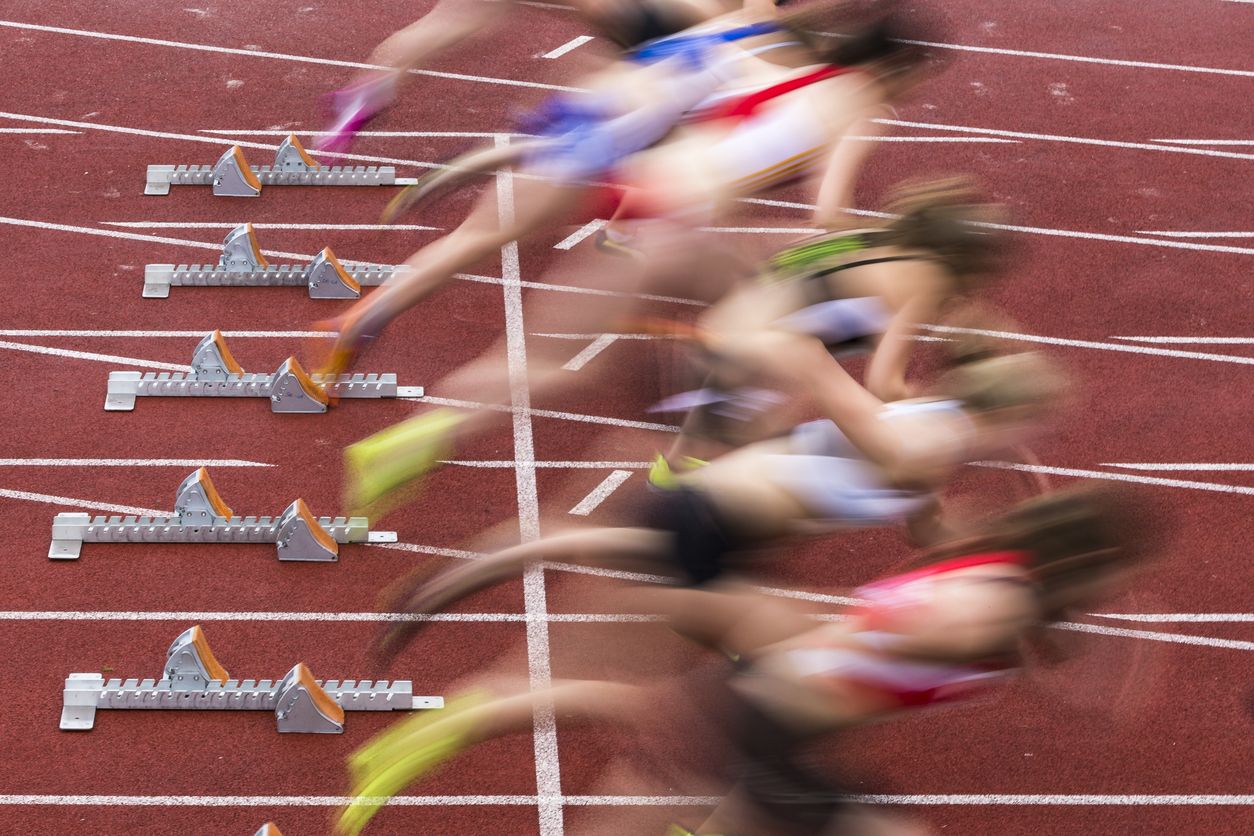Table of Contents
It really takes a lot of hard work to stay in shape, therefore it is essential to exercise on a regular basis. But we all know it is not that easy to remain active, a few days off may sometimes turn into the longer break from any exercise. Find more information about what happens to your body when you stop exercising below.
Health status
We firstly need to know how to define and quantify health status, only then we understand what does it takes when we stop exercising. When it comes to our body and our health status, we need to admit that we all are different. We all do different exercises, different sports and have different age, strengths and weaknesses. That is why the effects of inactivity manifest differently from person to person. However, there are some standard measures to assess this status.
One of the most important measure is oxygen uptake, or VO2, that measures the difference in oxygen concentration between the blood leaving the heart and the blood that returns to the heart.

Another tool used by exercise physiologists is the measure of lactate, that is produced at a particular exercise intensity. Lactate is in our body produced constantly, as it is the sodium salt of lactic acis, that is formed from the breakdown of glucose. Lactate formation does not use oxygen, do the process is often called anaerobic metabolism. Lactate is produces by the muscles when the amount of oxygen is limited, so we can say it is also an indirect measurement of the efficiency in our body when talking about delivering oxygen to the tissues.
Moreover, there are also other tests, measurements for muscle endurance, muscle strength and its flexibility. These gym measurements include push-ups, pull-ups, planking, toe-touching and others similar exercises. Andreas Bergdahl, an assistant in cardiovascular physiology at Montreal’s Concordia University, says these tests are more subjective comparing to oxygen uptake or lactate measurements.
But there is also the science of endocrinology that measures the effects of exercise on hormonal levels, metabolism, growth and development, tissue function and a lot of other factors.
You might be interested in these products:
How can exercise effect our bodies?
To understand the effects of sudden physical inactivity, it is really important to consider the effects of regular exercise on the body. Bergdahl says that regular endurance exercise leads to these main consequences:
• Increased ability of the heart to eject blood
• Increased ability of the blood vessels to send blood to where it is needed
• Increased number of capillaries (that deliver oxygen and food to the muscles)
• Increased size and the number of mitochondria (the “power plant” of the cells)
All of these changes makes use of oxygen and nutrients more efficient.
“Instead of sending lots of blood to your gut, kidneys and skin, all with limited ability to enhance someone’s performance, your body has trained its capacity to use the resources for maximizing performance,” says Bergdahl.

Harry Pino, a senior exercise physiologist at the Sport Performance Center at NYU Medical Center Langone, agrees that endurance training has a profound effect on our bodies. “Research shows that thirty consecutive minutes of cardiovascular activity, when done regularly, will not only improve your cardiovascular system, but will also improve some core mobility,” told Pino.
“The fitter you are, the harder you fall.“
– Harry Pino, a senior exercise physiologist at Sport Performance Center, NYU Medical Center Langone
Moreover, Pino says that regular exercise increases muscle strength, coordination, stability and flexibility, while it also increases endocrine measures, such as fat and sugar levels.
Apparently healthy bud deconditioned individuals
So what do you think happens to the body when we suddenly stop doing any physical activity? People, elite athlets or regular gym-goers, may easily get injured, take extended fitness break or they simply lose any interest in working out.
Exercise physiologists refer that effects of detraining on “apparently healthy but deconditioned individuals” are profound, but it also largely depends on the individual’s initial fitness level. Pino says “The fitter you are, the harder you fall”. Bergdahl also says that athlete’s fitness drops faster the fitter they are.

“It basically means that what applies to an elite athlete after one week might take a sedentary individual one or two months to experience,” says Bergdahl. The elite athletes will be always in a better shape than someone else, but will definitely lose a greater percentage of their fitness.
There is also useful analogy : we have two pots of water – one of them is just off the boil, the other is hot but not scalding. Both of them lose heat to room temperature, but the hotter pot is still hotter than the second one, even it lose a greater proportion of its overall heat.
Disheartening declines
VO2 Max is the first fitness measure to be affected that is followed by declines in muscle structure, strength, stamina and coordination. Athletes in detraining mode can experience not only these declines, but also a rise in sugar levels and blood pressure. In addition, they might feel some changer very quickly.
Bergdahl explains, that aerobic enzymes, which provide food for mitochondria, decrease within some days, while the adaptation in blood supply decreases relatively slowly. Therefore the local metabolic system declines greatly when we compare it with the capacity to circulate and deliver oxygen.
“There are studies indicating a decline of 7 to 10% of oxygen uptake after 12 days of sudden inactivity, 14 to 15% after 50 days, and 16 to 18% after 80 days,” says Bergdahl.
Pino agrees with Bergdahl statement and says that endurance is one of the first thing to go. Detraining begins to produce its effects within the first week in healthy people, though in very low percentages (less than 5%) in oxygen uptake as well as in muscle power. Pino says that it can be demonstrated in runners, that have some of the most dramatic declines.

Pino also talks about a person, who can run 5 kilometers in 20 minutes. That person will worsen their time by approximately 10 seconds after only one week of inactivity. Percentages really start to drop after 10 to 14 days. Runners begin to experience a reduction in muscle power, and their time worsen as well, by approximately 1 minute and 5 seconds. Between 14 to 30 days, athletes can expect to experience a 12% reduction in oxygen uptake and a noticeable decrease of muscle power. “Notice that during the first two weeks I described it as being a reduction of muscle power,” adds Pino, “and later as a decrease in muscle power.”
What was once a 20-minute for 5 kilometers is now 23-minutes for 5 kilometers. After 1 or 2-months break, athletes lose 19 to 20% of the oxygen uptake and a significant reduction in muscle power. They typically come to 24 minutes at this stage and after two months exhibit a 26% reduction in VO2.
“It’s shocking to see what happens to the body,” says Pino. “We start to see lots of changes to muscle, strength, and fat levels—it really deteriorates your structural well-being.
“This can really discourage people from starting exercises for the fear that they’re going to lose it,” he says. “Well, the subsequent recovery will take longer, so it’s important that they keep this in mind.”
It is really interesting how Pino explains that some people blame these declines on age, but the truth is that the oxygen uptake do not dramatically change with age. “Certainly, it will eventually change with age, but what typically changes are the habits of practicing at high level intensity, and that’s how you slow down,” he says. “It’s not so much the frequency of exercise, but the quality of exercise.”
What happens with fat and muscles?
It is true that athlete firstly feels changes in cardiovascular system, but losses in muscle mass definitely follows. Berghdal says that the rate of loss depends on age, because the older we are the faster we lose our muscles.

“The cross sectional area of the muscle fibers—in particular what we call the slow twitch fibers (essential for endurance and aerobic exercise), will decrease. This means that an individual undergoing detraining will reduce the amount of muscle tissue they have. The changes will start within the first two weeks. Furthermore, the oxidative capacity (i.e. the ability of the mitochondria to produce energy) will decline in the explosive muscle type we call fast twitch muscle fibers.”
Higher trained athletes tend to show a drop of aerobic endurance within three weeks of detraining, according to Pino. But they will retain a significant amount of strength and endurance, even after 12 weeks.
“Basically, the aging effect is the same as what will happen during detraining.”
– Andreas Bergdahl, assistant in cardiovascular physiology at Montreal’s Concordia University
“That’s because they were at a high level of fitness,” he says. “But if we’re talking about deconditioning individuals, they’re really going to start hitting those numbers already mentioned.”
Pino says that it does not matter whether a person is a pro athlete or only someone who works out regularly, the effect of detraining will typically manifest between 10 to 28 days, as noticable diminished muscle strength, including speed and agility, mobility and a loss of coordination.
And then we also need to consider fat, although Pino says it is just a big misconception – that muscles may convert into fat. “What really happens is that the muscle cells, which are completely different than fat cells, become smaller, because now you don’t have a demand of power and strength, they’re not growing,” says Pino “That’s atrophy. Then you have fat cells that are starting to get larger and bigger, which will lead to changes in your appearance. Instead of looking lean and trim, you start feeling bloated and round.”
When it comes to weight loss via exercise, Pino says that there are three important components : frequency, duration and intensity. The first two are the most important.
Inactivity Badness
A completely sedentary lifestyle can lead to a host of related complications, including weight gain, the potential for obesity, diabetes, cardiovascular disease and problems with ligaments and joints. Another important aspect is the fact, that a lack of exercise will speed up the decline in functional capacity with aging.
“Physiologic and performance measures improve rapidly during childhood and achieve a maximum between late adolescence and approximately age 30,” says Bergdahl. “The decline starts shortly after the age 40 depending on the body system. The changes are similar to detraining.” However, regular exercise will slow down this deterioration and will keep your body “younger” for a longer period of time.
In addition, there are also the psychological effects of physical inactivity we need to consider. Inactivity and a lack of exercise produce certain psychological effects like depression, anxiety and lower self-esteem.
“Part of that psychological effects has to do with blood flow (again oxygen) to the brain,” explains Bergdahl. “More oxygen equals better brain function. Furthermore, exercise is actually a form of stress, but a good and controlled one, which is used to train your body to handle not only an increased oxygen demand but also increased levels of certain hormones such as norepinephrine. By exercising you desensitize the receptors which means that it will take higher concentrations of these hormones, as well as longer exposure for your body to feel stressed.” So basically a lack of exercise produces the opposite effect.
Active recovery as the solution
It is really clear, that the sudden acceptance of a sedentary lifestyle has a profoundly negative effect on the body, especially after a period of regular trainings. “That is the importance of staying physically active, even if you’re not training as you used to. Even if you take a break you still have to be training.” says Pino. “This is what we call active recovery.”’

And finally, Pino recommends that athletes still try to find ways to remain active, even after running a marathon or after an injury. He recommends things as the stationery bicycle, elliptical or rower. Many athletes also perform cross-trainings during their “detraining phase”.
“This gives the muscles that work hard a break,” he says, “but they won’t lose that much aerobic fitness.”
[1] Ready, E. A.: Quinney, H.A., Alteratuons in anaerobic threshold as the result of endurance training and detraining. - – https://www.ncbi.nlm.nih.gov/pubmed/7132647
[2] Coyle, E. F.; Martin, W. H.; Sinacore, D. R.; Joyner, M. J.; Hagberg, J. M.; Holloszy, J. O., Time course of loss of adaptations after stopping prolonged intense endurance training.– https://www.ncbi.nlm.nih.gov/pubmed/6511559
[3] Madsen, K.; Pedersen, P. K.; Djurhuus, M. S.; Klitgaard, N. A., Effects of detraining on endurance capacity and metabolic changes during prolonged exhaustive exercise.– https://www.physiology.org/doi/abs/10.1152/jappl.1993.75.4.1444


Add a comment